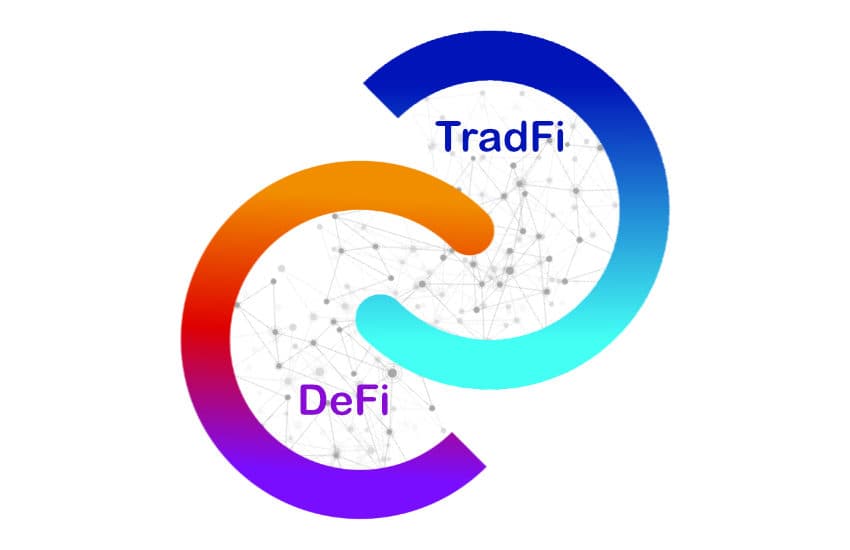In today’s digital world, the idea of earning money passively—without constantly working for it—is more appealing than ever. That’s exactly what DeFi lending offers: the opportunity to put your crypto assets to work and earn steady, hands-free income. But while the rewards can be exciting, jumping in without understanding how it works can be risky.
This guide breaks down everything you need to know to get started with DeFi lending in 2025—from the tools you’ll need to the platforms you can trust and the risks to keep an eye on. Whether you’re new to crypto or looking to expand your DeFi knowledge, this is your roadmap.
Opening the Door: What Is DeFi Lending?
At its core, DeFi (Decentralized Finance) is a financial system that operates without centralized intermediaries like banks or brokers. It runs entirely on smart contracts—automated code that lives on the blockchain. These contracts allow people to borrow and lend money, earn interest, and trade assets, all peer-to-peer.
Lending in DeFi
In traditional finance, you deposit money in a bank and earn interest. The bank lends your money to borrowers at a higher rate, keeping the difference.
In DeFi, you cut out the middleman. You lend your crypto directly to a lending protocol, which in turn allows borrowers to access those funds, all managed by smart contracts. In return, you earn a share of the interest paid by borrowers.
What You’ll Need to Get Started
Starting with DeFi lending doesn’t require a background in coding or finance. Just a few key things:
1. A Crypto Wallet
This is your digital identity in the DeFi world. Wallets are like the login credentials for blockchain applications.
Recommended wallets:
· MetaMask (browser + mobile)
· Trust Wallet (mobile)
· Coinbase Wallet (beginner-friendly)
Tip: Back up your seed phrase (a 12- or 24-word recovery phrase). If you lose it, you lose access to your funds.
2. Stablecoins or Crypto Assets
You’ll need some crypto to lend. Stablecoins are a great starting point because they’re pegged to fiat currencies like USD, reducing volatility.
Common lending assets:
· Stablecoins: USDC, DAI, USDT
· Blue-chip assets: ETH, WBTC
· Other tokens depending on the platform
Beginner tip: Start with stablecoins to minimize exposure to price drops.
3. A Lending Protocol
These platforms act like decentralized banks. You deposit assets, and the platform lends them out. Everything is managed by code—no human intervention needed.
Top lending protocols (as of 2025):
· Aave: Popular across Ethereum and Layer 2 chains.
· Compound: Simple, reliable, and highly trusted.
· Spark Protocol: Backed by the MakerDAO ecosystem.
· Venus: Built for the BNB Chain community.
How Lending Actually Works (Behind the Scenes)
Let’s go beyond the surface. Here’s what happens after you click “deposit”:
Step 1: You Supply Liquidity
You deposit crypto into a lending pool on the platform. This pool is shared among many other lenders like you.
Step 2: Smart Contracts Handle Lending
Borrowers access funds from the same pool. The smart contract ensures borrowers over-collateralize their loans (e.g., borrowing $100 only if they deposit $150 worth of crypto).
Step 3: You Earn Interest
Borrowers pay interest on what they borrow. The protocol redistributes that interest among all lenders based on how much they contributed.
Step 4: Withdraw Anytime
Most lending platforms are highly liquid. You can withdraw your funds (and interest) whenever you want—unless the pool is temporarily empty (rare but possible).
How Much Can You Actually Earn?
Interest rates vary depending on the asset and demand. Here’s a general snapshot:
| Asset Type | Typical Annual Yield (APY) |
| Stablecoins (USDC, DAI) | 4% – 10% |
| ETH, WBTC | 1% – 5% |
| DeFi Tokens (riskier) | 8% – 20%+ |
Platforms adjust rates dynamically based on supply and demand. When many users lend, the APY drops. When borrowing increases, rates rise.
Pro tip: Use DeFi dashboards like DeFiLlama or Zapper to compare live yields.
Understanding the Risks (Don’t Skip This Part)
Like any investment, DeFi lending comes with risks. Here are the big ones to watch:
1. Smart Contract Vulnerabilities
Smart contracts are code—and code can have bugs. If a lending platform is poorly audited, hackers might exploit vulnerabilities.
Solution: Stick to audited and battle-tested protocols with strong communities and bug bounties.
2. Protocol Risk or Hacks
Even reputable platforms have been hacked. If you’re on the wrong end of an exploit, you could lose funds.
Solution: Start with small amounts. Diversify across platforms.
3. Liquidation Events (for borrowers)
If you’re on the lending side, you’re less exposed—but if the collateral behind a loan drops in value too quickly, it could impact the lending pool’s stability.
Solution: Favor platforms with over-collateralized loans and real-time liquidation systems.
4. Regulatory Uncertainty
DeFi is still in regulatory gray zones in many countries. New laws may affect how platforms operate.
Solution: Stay updated on regulations in your region. Use non-custodial wallets and decentralized protocols to retain control.
Popular Lending Platforms to Explore in 2025
Let’s quickly review some top DeFi lending options:
🔷 Aave
· Multichain: Supports Ethereum, Polygon, Optimism, and more.
· Features: Flash loans, interest rate switching, and stablecoin lending.
🔷 Compound
· Clean, easy interface for beginners.
· Offers governance participation through COMP tokens.
🔷 Spark Protocol
· Built around DAI and the Maker ecosystem.
· Low gas fees and integrated savings rate vaults.
🔷 Venus
· Ideal for Binance Smart Chain (BNB Chain) users.
· Offers high-yield altcoin lending, though with slightly more risk.
Smart Strategies for Safer Lending
Here’s how you can lend confidently without falling into common traps:
· Start with $50–$100 in stablecoins. Learn how the platform works before scaling up.
· Use multiple protocols. Don’t keep all your crypto in one pool.
· Avoid shady websites. Bookmark official URLs to dodge phishing sites.
· Stay away from ultra-high APYs. If something sounds too good to be true, it probably is.
· Track your positions. Use dashboards like Zapper, DeFiLlama, or Zerion.
What’s Next for DeFi Lending?
DeFi is not just a fad. In fact, it’s becoming more integrated with traditional finance. In the coming years, expect:
· Integration with real-world assets (RWA): Lending backed by real estate, stocks, or invoices.
· Cross-chain lending: Borrow on Ethereum using assets from Solana or other chains.
· Decentralized credit scores: Borrowing without collateral using on-chain trust data.
· Lower fees and faster transactions through Layer 2 scaling solutions.
As protocols evolve, DeFi lending will become more user-friendly, secure, and accessible—even for non-crypto users.
Final Outcome: Is DeFi Lending Right for You?
If you’re looking to earn passive income from your crypto without active trading, DeFi lending can be a solid starting point. It’s beginner-accessible, transparent, and puts you in full control.
But like any financial tool, it requires understanding, patience, and discipline. Start small, test platforms, research thoroughly—and remember that safety is more important than speed.





